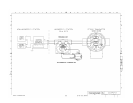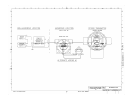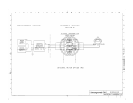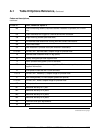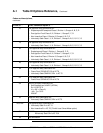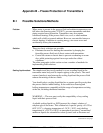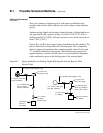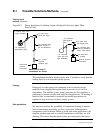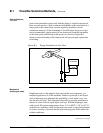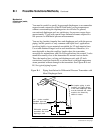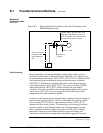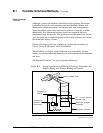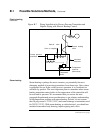
6/08 ST 3000 Release 300 and SFC Model STS103 User’s Manual 237
Appendix B – Freeze Protection of Transmitters
B.1 Possible Solutions/Methods
Problem
When water is present in the process fluid and ambient temperatures can
fall below the freezing point (32°F/0°C), pressure transmitters and their
piping require freeze protection. Transmitters may also require
continuous heating, if the process fluid is tar, wax, or other medium
which will solidify at normal ambient. However, uncontrolled steam or
electric heating, in addition to wasting energy, can cause errors and
accidentally destroy the transmitter.
Solution
These two basic solutions are possible:
• Eliminate the need for heating the transmitter by keeping the
freezable process fluid out of direct contact with transmitter.
• Control the steam or electric heat to prevent overheating on warm
days while protecting against freeze-ups under the coldest
conditions.
The other paragraphs in this section review a number of methods for
implementing both solutions.
Sealing liquid method
The simplest and least costly method is to use a sealing liquid in the
transmitter meter body and its impulse piping to the process. The small
contact (interface) area between the sealing liquid and the process fluid
reduces the mixing of the two fluids.
You should select a sealing liquid that has a greater specific gravity than
the process fluid to inhibit mixing. It also must have freezing and
boiling temperatures compatible with the range of temperatures existing
at the site, including the heated interface.
WARNING
WARNING — The user must verify the compatibility of any sealing
liquid with their process fluid.
A reliable sealing liquid is a 50/50 percent (by volume) solution of
ethylene-glycol and water. This solution has a specific gravity of 1.070 at
60°F (15°C), a freezing temperature of –34°F (–36°C), and a boiling
temperature of +225°F (+106°C) at atmospheric pressure. Conventional
antifreeze liquids for automobile coolant systems such as Prestone and
Continued on next page



